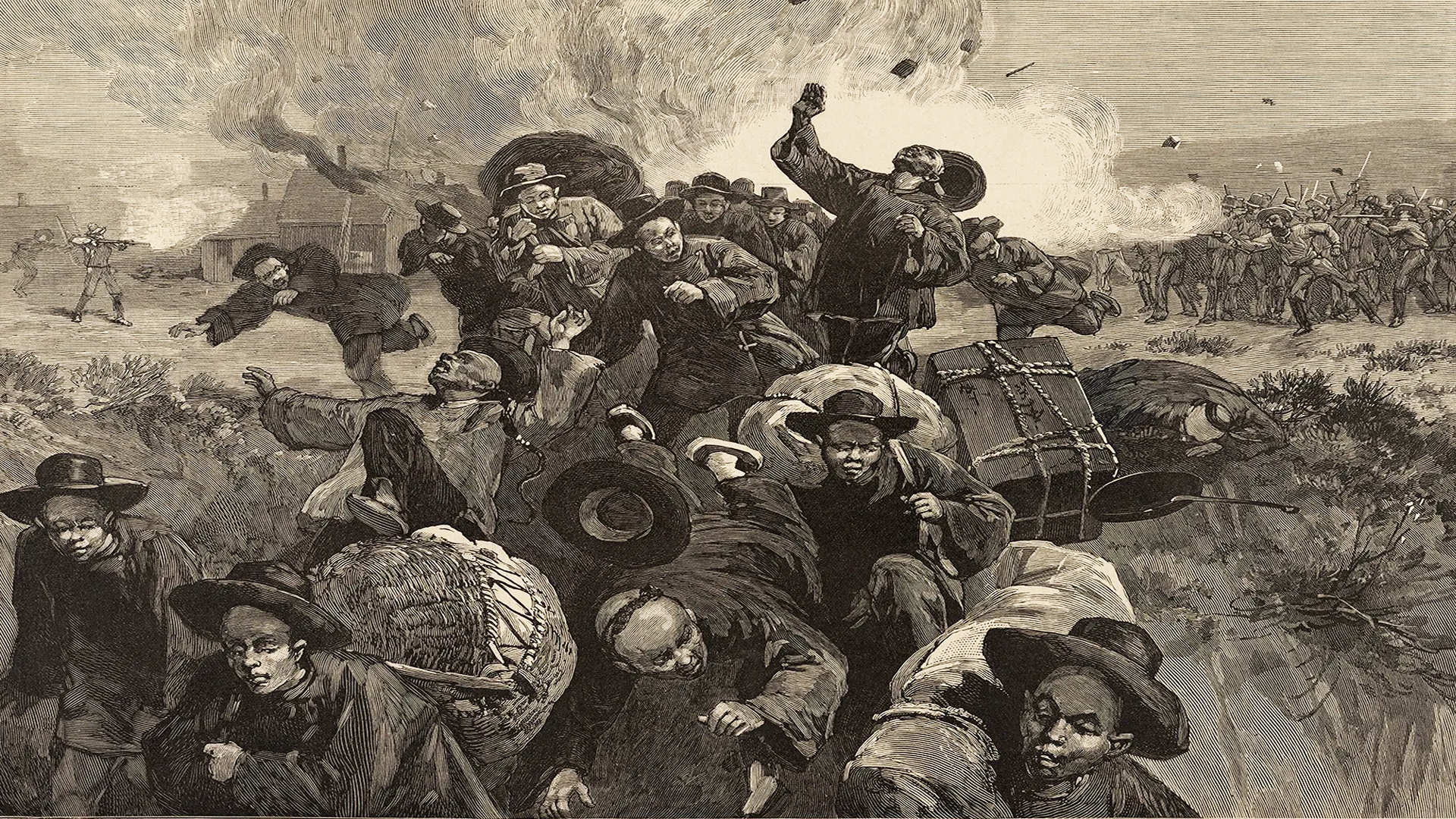The Rock Springs Massacre

Illustration of Rock Springs' Chinatown burning during the massacre of 1885.
What Happened?
In the summer of 1885, tensions in Rock Springs, Wyoming Territory, reached a breaking point. The Union Pacific Railroad relied heavily on Chinese miners—first recruited as strikebreakers—to keep coal production high and wages low. White miners, resentful of both the company’s power and the Chinese workers’ presence, joined the Knights of Labor union and threatened action.
On September 2, a fight in the No. 6 mine escalated into open violence. A mob of more than 100 white miners, armed with guns, knives, and clubs, descended on Rock Springs’ Chinatown. They looted homes, set buildings ablaze, and killed at least 28 Chinese miners, leaving 15 others wounded. Some victims burned to death in their homes; others were shot as they fled into the hills.
The massacre did not end with the killings. Survivors were forced into boxcars by U.S. troops, only to be brought back to Rock Springs under armed guard a week later. Instead of justice, they were ordered back to work. Sixteen white miners were briefly arrested, but no charges ever stuck, even though the murders happened in broad daylight and in front of witnesses.
The Rock Springs Massacre reflected national patterns. Anti-Chinese prejudice had been stoked for decades, culminating in the Chinese Exclusion Act of 1882, the first federal law to ban immigration based on race. Across the West, “The Chinese Must Go” became a rallying cry for those who blamed immigrants for economic woes. Rock Springs revealed just how deadly that combination of racial animosity and corporate exploitation could become.
For the Chinese miners, the massacre was not only a personal tragedy but a public humiliation. Many returned to find their homes reduced to ashes, their dead unburied, and their presence still unwanted. Federal troops stayed in Rock Springs for over a decade to prevent further violence, but the message was clear: Chinese lives were disposable when profits and prejudice aligned.
Why It Matters
The Rock Springs Massacre shows how racism, economic exploitation, and political indifference intertwined to produce violence. It reminds us that exclusionary laws and racial scapegoating were not abstract policies but lived realities that left families destroyed and communities in ashes. To study Rock Springs is to confront a painful truth: that American democracy has too often defined who belongs by who can be excluded—and that the echoes of this violence still shape debates on immigration and labor today.
?
How did the Chinese Exclusion Act create the conditions for violence like the Rock Springs Massacre?
Why did the Union Pacific Railroad rely on Chinese miners, and how did that fuel resentment among white workers?
What does the failure to prosecute any of the perpetrators reveal about law and race in 19th-century America?
How does the Rock Springs Massacre connect to more recent episodes of anti-Asian violence in the U.S.?
What role should public memory and education play in preserving the history of events like Rock Springs?
Dig Deeper
Explore the history and impact of the 1882 Chinese Exclusion Act, which set the stage for anti-Chinese violence like Rock Springs.
Related

The Enlightenment: Revolution of the Mind
The Enlightenment wasn’t just an era of smart people in powdered wigs—it was a radical shift in how humans understood power, truth, and their place in the world. Its ideas fueled revolutions, rewrote constitutions, and laid the intellectual bricks of modern democracy.

American Revolutionary War: From Protest to a New Nation
How arguments over taxes and rights grew into an eight-year war—and how ideas, allies, and perseverance turned thirteen colonies into the United States.

The Great Society: Government as a Force for Good
The Great Society wasn’t just a policy agenda, it was a radical vision of what America could be. With sweeping reforms in health care, education, civil rights, immigration, and the environment, President Johnson’s plan aimed to eliminate poverty and racial injustice once and for all.
Further Reading
Stay curious!
